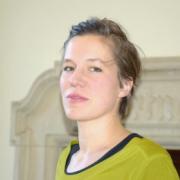The double embeddedness of creative work
Lisa Basten, Berlin Social Science Center (WZB)
In the search for fields in which the changing nature of economic work is exemplified, the creative industries are a common candidate. They are paradigmatic when discussing hybrid work (Manske, 2018)), the project society ( (Windeler & Sydow, 2001; Windeler & Wirth, 2004) and deregulation ( (Haak & Schmid, 2001; Schmid, 2000). On top, a “Creative Industries Turn“ (Menger, 2013) has led to internationally comparable data collections pointing to the enormous economic impact of the formerly disregarded sectors (Mercy & Beck-Domzalska, 2016; Söndermann, 2016). This prepared the ground for their status as a thriving, knowledge-based economy well prepared to meet the calls for innovation, digital change and creative entrepreneurship (Fritsch & Sorgner, 2013).
The puzzle driving my research is why, in a prosperous economic environment, has creative labor stayed precarious but attractive all the same? Why have individuals not been turning their back at this deregulated mess – and why have regulative measures been incapable of alignment? Why the stability?
This paper argues that the answer is to be found in the dual nature of creative work as wage providing labor and artistic expression. I will conceptualize creative work as embedded in two systems and their respective institutional arrangements, drawing from the concept of ‘institutional work’, most specifically Battilana’s “paradox of the embedded agency” (Battilana & D'Aunno, 2010).
Economic work, which includes any “activity undertaken for another party in exchange for compensation” (Cappelli & Keller, 2013) is embedded in a system of labor market institutions (North, 1991; Scott, 2014). On a normative level, informal labor market institutions have formed around different status groups, i.e. their highly legitimized ideal types: On the one end the standard employment relation (SER) with its implications for social and planning security, union representation and strong, often lifelong ties to a company (Dörre, 2011; Mückenberger, 1985). On the other end the idea of the standard entrepreneur (SEP), who acts financially independent, creates economic value and (standard) jobs and whose interests are represented by a professional association (Bührmann, 2012).
Labor market institutions are being challenged by a changing world of work, in which hybrid work relations and freelancing gain importance, in which companies fragment due to digitalized and globalized value chains and in which the values attached to economic work change. In Germany, the regulative institutions of the labor market system have proven very „resilient“ (Scott, 2014) despite the growing gap between their coverage and the reality of a growing number of workers. Creative work is economic labor and thus embedded in the system of labor market institutions. However, it is also embedded in a system of institutions pertaining to the significance ascribed to culture and art in post-war Germany, which I will refer to as the system of artistic significance. On a normative level, the institutionalized public interest of art and culture manifests in Germany in the spending of public money on cultural activities (12,4 billion in 2015) and public broadcasting (7,9 billion in 2016) and thus in economic work opportunities for millions. On a regulative level, a shared conviction that art is a significant part of society has led to changes in the institutions of the labor market system, resulting in adaptions within the social security system (the Künstlersozialversicherung KSK), stretching the competencies of wage regulation into intellectual property directives (‘fair remuneration’ in copyright laws) and expanding the realm of collective bargaining to ‘employee-like’ workers.
I will argue that three results can be drawn from the double embeddedness of creative work:
- It facilitates agency/institutional work because actors (individual workers as well as collective organizations) need to adapt to “institutional incompatibilities” (Battilana & D'Aunno, 2010: 39) of two systems. Thus, institutional change is encouraged by the double embeddedness of creative work.
- The hierarchical relation of the two systems in terms of resources and legitimacy contains the effects institutional work has in changing the risks of precarity. This is all the more relevant in times when the definition of which creative activity is labelled significant and thus institutionally ‘protected’ is stretched.
- The double embeddedness enforces, stabilizes and legitimizes high risks of precarity for most and stardom for few as a legitimate distinction inherent in creative work.
The paper closes with a discussion of what could possibly be inferred from these results for collective, individual and political actors.
References
- Battilana, K., & D'Aunno, T. 2010. Institutional work and the paradox of embedded agency. In T. B. Lawrence (Ed.), Institutional work. Actors and agency in institutional studies of organizations: 31–58 (1st ed.). Cambridge: Cambridge Univ. Press.
- Bührmann, A. 2012. Unternehmertum jenseits des Normalunternehmertums: Für eine praxistheoretisch inspirierte Erforschung unternehmerischer Aktivitäten. Berliner Journal für Soziologie, 1(22): 129–156.
- Cappelli, P., & Keller 2013. Classifying Work in the New Economy. Academy of Management Review, 38(4): 575–596.
- Dörre, K. 2011. Funktionswandel der Gewerkschaften: Von der intermediären zur fraktalen Organisation. In T. Haipeter & K. Dörre (Eds.), Gewerkschaftliche Modernisierung: 267–301. Wiesbaden: VS Verlag für Sozialwissenschaften.
- Fritsch, M., & Sorgner, A. 2013. Entrepreneurship and Creative Professions. A Micro-Level Analysis. SOEPpapers on Multidisciplinary Panel Data Research, (538).
- Haak, C., & Schmid, G. 2001. Arbeitsmärkte für Künstler und Publizisten. Modelle der künftigen Arbeitswelt? Leviathan, 29(2): 156–178.
- Manske, A. 2018. Selbstständige Arbeit als Grenzgang. In A. Bührmann, U. Fachinger & E. M. Welskop-Deffaa (Eds.), Hybride Erwerbsformen. Digitalisierung, Diversität und sozialpolitische Gestaltungsoptionen: 213–238. Wiesbaden: Springer VS.
- Menger, P.-M. 2013. European cultural policies and the 'creative industries' turn. In K. Thomas & J. Chan (Eds.), Handbook of research on creativity: 479-492. Cheltenham u.a.: Elgar.
- Mercy, J.-L., & Beck-Domzalska, M. (Eds.) 2016. Culture statistics 2016 edition. Luxembourg: Publications Office of the European Union.
- Mückenberger, U. 1985. Die Krise des Normalarbeitsverhältnisses. Zeitschrift für Sozialreform, 7(31): 415-434.
- North, D. C. 1991. Institutions. Journal of Economic Perspectives, 5(1): 97–112.
- Schmid, G. 2000. Arbeitsplätze der Zukunft: Von standardisierten zu variablen Arbeitsverhältnissen. In J. Kocka (Ed.), Geschichte und Zukunft der Arbeit: 269–292. Frankfurt/Main u.a.: Campus-Verl.
- Scott, W. R. 2014. Institutions and organizations: Ideas, interests and identities. Los Angeles, London, New Delhi, Singapore, Washington DC: Sage.
- Söndermann, M. 2016. Leitfaden zur Erfassung von statistischen Daten für die Kultur- und Kreativwirtschaft: Auftrag des Arbeitskreises KKW der Wirtschaftsministerkonferenz.
- Windeler, A., & Sydow, J. 2001. Project Networks and Changing Industry Practices Collaborative Content Production in the German Television Industry. Organization Studies, 22(6): 1035–1060.
- Windeler, A., & Wirth, C. 2004. Arbeitsregulation in Projektnetzwerken. Eine strukturationstheoretische Analyse. Industrielle Beziehungen, 11(4): 295–319.




